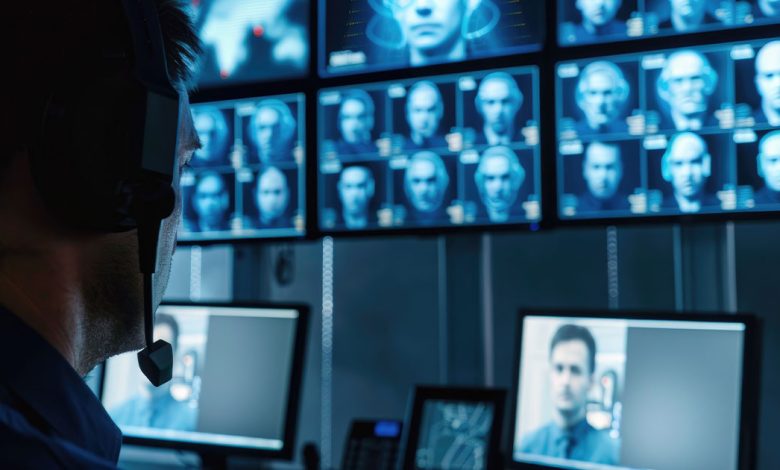Report: ATF’s Use of Facial Recognition AI to Identify Gun Owners Raises Concerns

WASHINGTON, D.C. — A recent report from Gun Owners of America (GOA) raises serious concerns about the Bureau of Alcohol, Tobacco, Firearms, and Explosives (ATF) using facial recognition technology to identify gun owners. The GOA article, which you can read in full here, details how the ATF has accessed facial recognition databases, conducted hundreds of searches, and may be using the technology alongside its extensive firearm transaction records.
While ATF previously claimed to have stopped using facial recognition tools in April 2023, recent reports suggest otherwise. With growing concerns over unconstitutional surveillance and government overreach, the implications for gun owners and their privacy are significant.
ATF and Facial Recognition Technology
According to GOA’s report, the Government Accountability Office (GAO) has confirmed that ATF had access to and used facial recognition services, including:
- Clearview AI, a system containing over 30 billion facial images sourced from publicly available websites, including social media, news articles, and mugshots.
- Vigilant Solutions, a database frequently used by law enforcement for investigative purposes.
- Various state, local, and tribal law enforcement databases that provide access to facial recognition tools.
The GAO has criticized federal agencies, including ATF, for failing to implement proper oversight when using facial recognition systems. A 2021 GAO report revealed that ATF employees were not required to take training on how to use the technology, what images were appropriate for searches, or how to interpret the results. This lack of accountability increases the risk of false identifications, wrongful arrests, and unconstitutional surveillance.
Beyond the risk of misidentifications, the GAO warned that government use of facial recognition technology could have a chilling effect on First Amendment rights, discouraging individuals from freely expressing themselves due to fear of government tracking. When applied to gun owners, this concern extends to the Second Amendment, as law-abiding citizens may be deterred from purchasing firearms out of fear of being monitored.
Has ATF Stopped Using Facial Recognition?
GOA reports that while ATF claimed to have stopped using facial recognition tools in April 2023, evidence suggests that this may not be the case. A July 21, 2024, report from Senator Ron Johnson on the attempted assassination of former President Trump in Butler, Pennsylvania, revealed that ATF conducted facial recognition searches following the incident.
According to the Senate report:
“Photos… were sent to the Bureau of Alcohol, Tobacco and Firearms (ATF) for facial recognition… The ATF was apparently requesting the photos… for facial recognition purposes. It is unclear… why ATF would be the agency responsible for conducting facial recognition.”
If ATF truly halted its use of these technologies, as it claimed in 2023, why was it conducting facial recognition searches in 2024? This raises critical questions about whether the agency has continued using these tools without public or congressional oversight.
New Jersey Police Used Facial Recognition to Track Gun Owners
GOA’s report also highlights how law enforcement agencies in New Jersey used Clearview AI to identify whether individuals owned firearms prior to their arrests.
New Jersey Attorney General Gurbir Grewal admitted in an interview that officers used facial recognition to determine whether a suspect owned firearms. The state later banned the use of Clearview AI, citing concerns over racial bias and inaccuracies, but the precedent set by New Jersey law enforcement raises serious concerns about how government agencies—especially ATF—could use the technology.
Could ATF Combine Facial Recognition with Its Firearm Registry?
A particularly troubling concern raised by GOA is the possibility that ATF could combine facial recognition technology with its extensive firearm transaction records to create an identifiable, searchable database of gun owners.
ATF has already admitted to possessing nearly one billion firearm transaction records, many of which are digitized and searchable. While the agency insists its digital records cannot be searched by name, GOA reports that ATF is the only federal agency that pays Adobe to disable search functionality in its PDFs—meaning the agency could easily re-enable searchability if it wanted to.
With growing efforts to fund “Law Enforcement Advanced Analytics” programs, ATF could potentially integrate facial recognition software with its firearm records database, creating a powerful tool to track gun owners and their firearms.
What’s Next?
GOA warns that anti-gun lawmakers in Congress are pushing legislation like the AIM Act, which seeks to remove restrictions on ATF and expand its enforcement authority. If passed, such legislation could further erode privacy protections for gun owners, making government surveillance even more invasive.
As GOA states, it will continue to fight these overreaches both in Congress and in the courts. The combination of facial recognition, a searchable firearm registry, and expanded ATF authority represents a serious threat to the rights of law-abiding gun owners.
For more details, you can read GOA’s full report here: https://www.gunowners.org/is-atf-using-facial-recognition-ai-to-id-gun-owners/
Read the full article here






